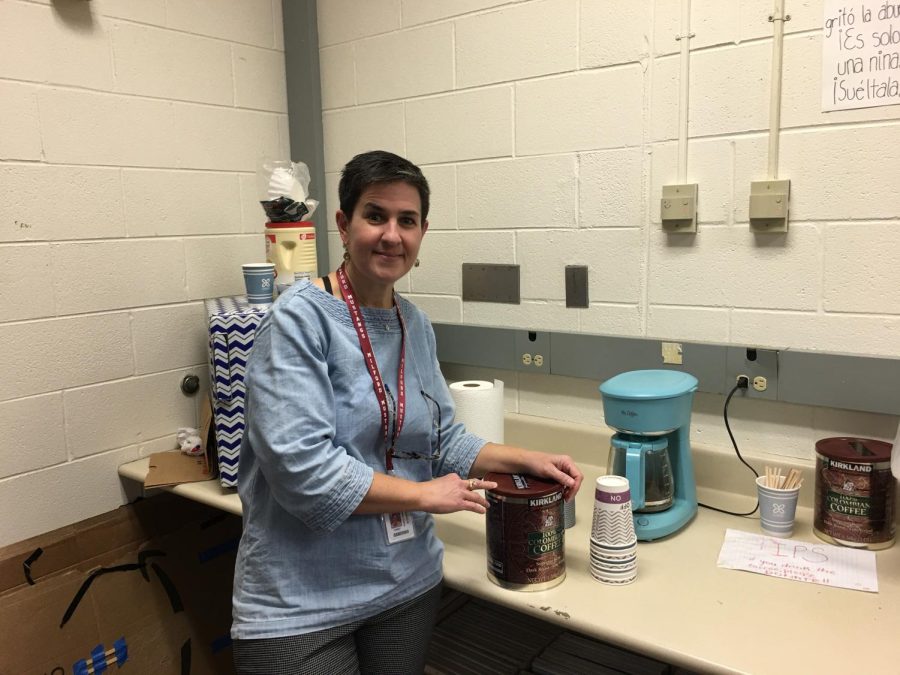Coffee Mornings: High School Spanish teacher takes creative twist on traditional learning
Profe alongside the coffee and other materials she has provided for her first hour students.
December 16, 2022
The first hour of the school day is often considered the most tedious and difficult to withstand. The combination of lack of sleep and early morning commutes is an equation that leads to a mass of tired students shoving themselves through the front doors, more excited to get the day over with than they are to learn something new.
However, one teacher at Milford High is tackling the problem of attention deprivation from a different perspective. Instead of harsh and overbearing restrictions to keep students’ attention, Carrie Pishek–known to her Spanish students as Profe–has opted to create a warmer, calmer classroom environment for her first-hour students.
Profe’s first hour is her Spanish 4 and 5 class. Although a rewarding course, understanding a class that is in a completely different language at 7:21 in the morning is no easy feat.. So how has Profe captured the interest of her tired students? By providing coffee and tea every day for her students. Its effectiveness has seemed to pay off too, as the coffee has quickly become a favorite part of the day for Profe’s first-hour students. “It makes the mornings feel more like home,” says Senior Meggie Martin.
In turn, a much more relaxed and eager learning environment has been created. “Students are way more on time, and they are much more present and awake,” says Profe. But Profe is not the only one to notice a difference in learning potential: the students also feel more strongly connected to the course and classroom as a whole. The shared experience of getting coffee with classmates first thing in the morning has created a stronger bond between the students and left a profound impact on students’ capability to learn. “Spanish 4 and 5 always had a vibe of hanging out with friends, but this has only expanded that feeling,” says Martin.
With an emphasis on traditional learning being a staple of modern learning, this is just one contrasting example of how coloring outside the lines and being a little creative with your classroom can lead to major improvements. It shows that if one aspect of a course or classroom lends itself to the students, then the students will be notably more inclined to lend their ears and eyes back. It is also a testament to the power a teacher has on a student’s ability to learn. The coffee, which is provided entirely by Profe, is a gesture of gratitude and appreciation towards her Spanish students who chose to take the most advanced level of a foreign language that our school can offer. “Part of us doing this is because it is a college-level language course and this is what my professor did for us my freshman year at university,” says Profe, “I took a lot of what I learned there and try to provide that same, inviting environment to my students.”
The students do not hesitate to give back, offering money every few weeks to ensure that more coffee and related materials can be bought. This mutual showcase of gratitude and appreciation has brought students together–but more importantly–it shows how a teacher’s kind and inclusive attitude towards education has enabled a drastic change in the environment to occur. School is not always simple, and current high school students have had to tackle a lot. But if every teacher tried to put their spin on the traditional lecture-style course, then maybe high school would become a learning haven for eager students–not another dull, early morning.
